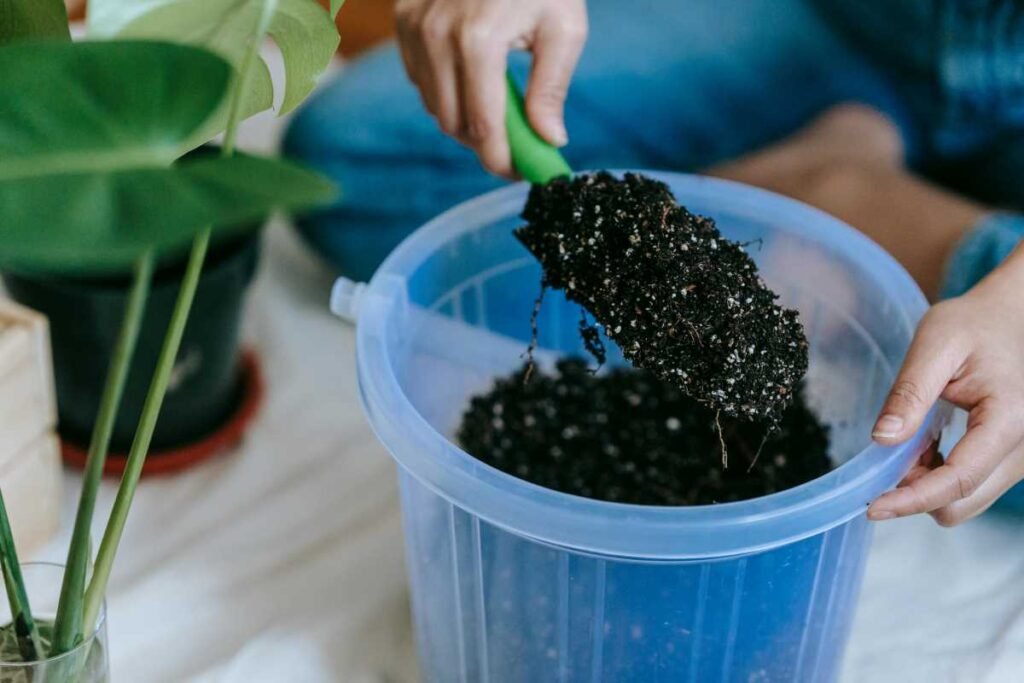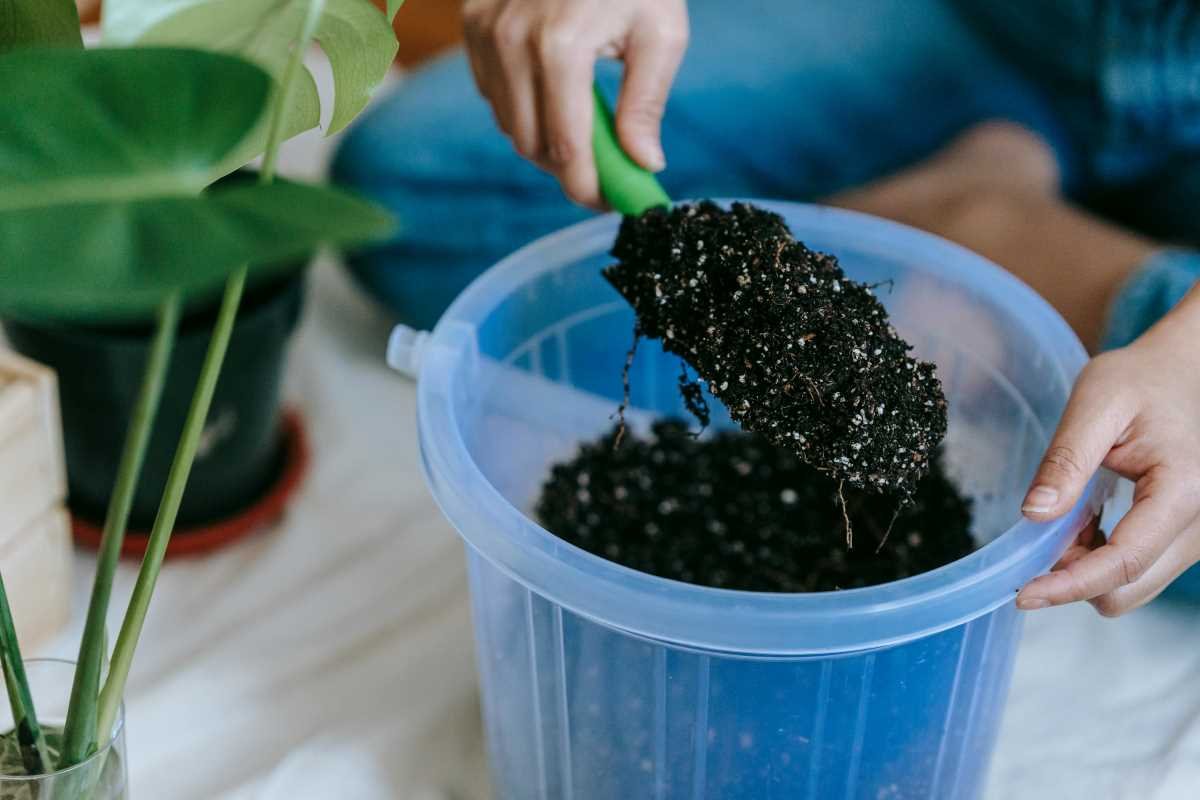Snake plants (Sansevieria trifasciata), also known as mother-in-law’s tongue, are among the most popular indoor plants due to their striking appearance, air-purifying properties, and low-maintenance nature.
One aspect of snake plant care that often confuses plant owners is fertilization. Although these hardy plants are known for thriving in neglect, proper fertilization can significantly improve their health, growth, and appearance.
In this comprehensive guide, we’ll delve into everything you need to know about snake plant fertilizer. We’ll explore its importance, types, how to apply it, and even organic alternatives.
Whether you’re a new plant parent or an experienced gardener, this blog will offer valuable insights to help you nurture a thriving snake plant.

Table of Contents
Why Do Snake Plants Need Fertilizer?
Snake plants are tough and resilient, often flourishing in environments where other houseplants would struggle.
However, like all plants, they require nutrients to grow and develop. In the wild, snake plants draw nutrients from the soil, but when grown indoors in pots, they depend on you to provide the right balance of nutrients through fertilizers.
Key Nutrients Required by Snake Plants
Snake plants, like all green plants, require three essential macronutrients:
- Nitrogen (N): Responsible for leaf growth and overall plant development. It helps snake plants maintain their beautiful green color.
- Phosphorus (P): Crucial for root development and flower production, although snake plants rarely flower indoors.
- Potassium (K): Enhances overall plant health by improving the plant’s resistance to diseases and pests.
In addition to these macronutrients, snake plants also need secondary nutrients like calcium, magnesium, and sulfur, along with trace micronutrients like iron, manganese, and zinc.
Benefits of Fertilizing Snake Plants
- Enhanced growth: Regular fertilization encourages faster and healthier growth, which is particularly important if you want your snake plant to reach its full potential.
- Improved leaf color: A well-fertilized snake plant will exhibit deep green leaves, which can enhance its aesthetic appeal.
- Increased resilience: A properly nourished snake plant will be better equipped to fend off pests, diseases, and environmental stresses like drought.
- Maximizing blooming potential: While it’s rare, snake plants can flower indoors under optimal conditions. Proper fertilization can increase the chances of blooming.
Types of Fertilizers for Snake Plants
Choosing the right type of fertilizer is key to ensuring that your snake plant gets the nutrients it needs without being overwhelmed.
Fertilizers for snake plants can be classified into two main categories: organic and synthetic.
1. Synthetic Fertilizers
These are commercially produced fertilizers that provide precise amounts of nutrients. They are often easy to use and are available in a variety of forms.
Liquid Fertilizers
- Advantages: Liquid fertilizers are one of the most popular options for indoor plants, including snake plants. They’re easy to mix with water, allowing for precise control over the concentration of nutrients. They are quickly absorbed by the plant’s roots and offer immediate results.
- How to Use: Mix the liquid fertilizer with water as directed on the package. Water the snake plant with the solution once a month during the growing season (spring and summer).
- Popular Liquid Fertilizers: Brands like Miracle-Gro Indoor Plant Food and Schultz Liquid Plant Food are well-known for their effectiveness on houseplants, including snake plants.
Granular Fertilizers
- Advantages: Granular fertilizers release nutrients slowly over time, making them a good option for gardeners who prefer less frequent applications. They are generally sprinkled on the soil surface and watered in.
- How to Use: Follow the manufacturer’s instructions for application. Typically, you’ll only need to apply granular fertilizers every 4 to 6 months.
- Popular Granular Fertilizers: Osmocote Indoor & Outdoor Smart-Release Plant Food is a popular granular fertilizer for houseplants.
Slow-Release Fertilizers
- Advantages: Slow-release fertilizers gradually release nutrients into the soil over a period of time, sometimes lasting for up to 6 months. This can be convenient for busy plant owners who may forget to fertilize regularly.
- How to Use: Apply the slow-release pellets to the soil, usually by mixing them into the top layer. Make sure to follow the product’s recommended dosage.
- Popular Slow-Release Fertilizers: Miracle-Gro Indoor Plant Food Spikes are an example of slow-release fertilizers that are easy to use for snake plants.
2. Organic Fertilizers
Organic fertilizers come from natural sources like compost, manure, and plant-based materials. They improve soil health over time and release nutrients gradually.
Compost and Manure
- Advantages: Organic compost and manure provide a rich mix of nutrients and beneficial microorganisms that improve soil structure and plant health. They release nutrients slowly, which reduces the risk of over-fertilizing.
- How to Use: Add compost or well-rotted manure to the soil around your snake plant once or twice a year. Be careful to avoid overloading the plant with too much organic material, as this can lead to soggy soil and root rot.
Worm Castings
- Advantages: Worm castings are an excellent organic fertilizer for snake plants. They are rich in nitrogen, phosphorus, and potassium, and they improve soil structure while boosting water retention.
- How to Use: You can either mix worm castings into the potting soil when repotting or sprinkle them on top of the soil. Apply them once or twice a year for optimal results.
- Popular Worm Casting Brands: Wiggle Worm Soil Builder is a trusted brand for high-quality worm castings.
Organic Liquid Fertilizers
- Advantages: Organic liquid fertilizers like fish emulsion and seaweed extract provide a quick boost of nutrients in an easily absorbed form.
- How to Use: Dilute the organic liquid fertilizer with water according to the package instructions, and water your snake plant once a month during the growing season.
When and How to Fertilize Snake Plants
Optimal Fertilization Schedule
Snake plants are slow-growing and don’t require heavy fertilization. However, fertilizing them during the growing season can enhance their growth.
The best time to fertilize snake plants is in the spring and summer, when they are actively growing. During the fall and winter, snake plants enter a period of dormancy, and fertilizing during this time can do more harm than good.
- Spring and Summer (Growing Season): Fertilize once every 4 to 6 weeks. This allows the plant to absorb nutrients during its active growth period.
- Fall and Winter (Dormant Season): Avoid fertilizing altogether during this time. The plant’s growth slows down, and any added fertilizer may build up in the soil, potentially leading to root burn or other issues.
How to Fertilize Snake Plants
- Choose the Right Fertilizer: Whether you opt for a synthetic or organic fertilizer, make sure it is balanced, with a nutrient ratio close to 10-10-10 or 20-20-20 (for synthetic fertilizers) or a natural, organic fertilizer with slow-release properties.
- Dilute the Fertilizer: When using liquid fertilizers, always dilute the solution to half the recommended strength. Snake plants don’t require a lot of nutrients, and over-fertilizing can lead to salt buildup in the soil.
- Water the Plant Before Fertilizing: It’s essential to water the plant thoroughly before applying fertilizer. This helps prevent fertilizer burn and ensures that the nutrients are evenly distributed throughout the soil.
- Fertilize During Watering: Mix the fertilizer into your watering can and apply it as you would during normal watering. Be careful not to overwater, as snake plants prefer dry conditions.
- Wipe Excess Fertilizer: After fertilizing, if you notice any fertilizer on the leaves, wipe them down with a damp cloth to avoid damage to the foliage.
Common Mistakes in Fertilizing Snake Plants
Over-Fertilizing
One of the most common mistakes snake plant owners make is over-fertilizing. Snake plants are relatively light feeders, and too much fertilizer can lead to an accumulation of salts in the soil, which can burn the roots and cause leaf damage.
Symptoms of Over-Fertilizing:
- Brown or yellow leaf tips
- Salt crust on the soil surface
- Stunted growth
- Root rot
To fix over-fertilization, flush the soil with water to remove the excess salts and refrain from fertilizing for a few months.
Using the Wrong Fertilizer
Not all fertilizers are suitable for snake plants. Avoid using fertilizers designed for flowering plants, as they contain higher amounts of phosphorus, which snake plants don’t need in large quantities.
Always choose a balanced fertilizer with equal parts nitrogen, phosphorus, and potassium.
Fertilizing During Dormancy
Fertilizing during the fall and winter when the plant is dormant can lead to salt buildup in the soil, causing root damage. Remember to suspend all fertilization during these months.
Organic vs. Synthetic Fertilizers: Which is Better for Snake Plants?
The debate between organic and synthetic fertilizers comes down to personal preference and gardening style. Both types have their pros and cons:
- Synthetic Fertilizers: These are more concentrated and provide immediate results, making them ideal for plant owners who want fast growth. However, synthetic fertilizers can lead to soil degradation over time, as they don’t add organic matter to the soil.
- Organic Fertilizers: Organic fertilizers improve soil health over time, and they release nutrients slowly, reducing the risk of over-fertilization. However, they may not provide the immediate results that synthetic fertilizers do.
Ultimately, the choice depends on whether you prioritize fast growth (synthetic) or long-term soil health (organic).
How to Improve Soil Health for Snake Plants
While fertilization plays a key role in feeding your snake plant, soil health is equally important. Healthy soil promotes root growth, improves nutrient uptake, and helps the plant thrive.
Here are some tips to improve soil health for your snake plant:
- Use Well-Draining Soil: Snake plants prefer well-draining soil to prevent root rot. A cactus or succulent soil mix works well. You can also make your own mix by combining equal parts potting soil, perlite, and sand.
- Repot Regularly: Snake plants don’t need frequent repotting, but repotting every 2-3 years can refresh the soil and provide the plant with fresh nutrients.
- Add Organic Matter: Adding compost, worm castings, or other organic materials to the soil can improve its structure and nutrient content.
- Check for Pests: Healthy soil is less likely to harbor pests, but it’s still essential to regularly inspect your plant for signs of pests like fungus gnats or spider mites. If pests are present, treat them promptly to avoid damaging your plant.
Snake Plant Fertilization FAQ
1. Can you fertilize snake plants with coffee grounds?
Coffee grounds can be used as a slow-release fertilizer for snake plants, but they should be used sparingly. They are acidic, which can lower the pH of the soil over time.
If you choose to use coffee grounds, mix them into the soil in small amounts and monitor the plant for signs of nutrient deficiency.
2. How often should I fertilize my snake plant?
Fertilize your snake plant once every 4 to 6 weeks during the spring and summer. Avoid fertilizing in the fall and winter when the plant is dormant.
3. Can I use succulent or cactus fertilizer on snake plants?
Yes, fertilizers designed for succulents and cacti are suitable for snake plants. These fertilizers are typically low in nitrogen and phosphorus, making them a good option for slow-growing plants like snake plants.
4. Can over-fertilizing kill a snake plant?
Yes, over-fertilizing can cause salt buildup in the soil, leading to root damage and potentially killing the plant. If you suspect over-fertilization, flush the soil with water to remove excess salts and stop fertilizing for a few months.
5. Is Epsom salt good for snake plants?
Epsom salt contains magnesium, which can be beneficial for snake plants in small amounts. However, it should not be used as a primary fertilizer.
You can dissolve 1 tablespoon of Epsom salt in a gallon of water and use it to water your snake plant once every few months.
Conclusion
Fertilizing your snake plant is a simple but essential part of keeping it healthy and thriving. While snake plants are known for being low-maintenance, providing them with the right balance of nutrients can encourage more vigorous growth and enhance their beauty.
By following the tips and guidelines in this blog, you’ll be well on your way to growing a robust and vibrant snake plant.
Remember to fertilize sparingly, use the right type of fertilizer, and prioritize soil health for long-lasting success. Happy gardening!
My name is Shahriar Robin, and my journey with plants began in childhood, igniting a lifelong passion that blossomed alongside my career as a nutritionist and sports trainer. Through SnakePlant.org, I channel this dedication, merging expertise from nutrition and sports training to nurture a platform sharing all-encompassing knowledge about Snake plants. This website mirrors my commitment to cultivating greenery, offering comprehensive insights on growth, maintenance, and nurturing practices for these captivating plants. My mission is rooted in leveraging diverse expertise to enhance plant care practices, believing profoundly in the therapeutic impact of nature. Join me on SnakePlant.org, where I unite a thriving community of enthusiasts, sharing experiences, insights, and the profound joys of planting.

